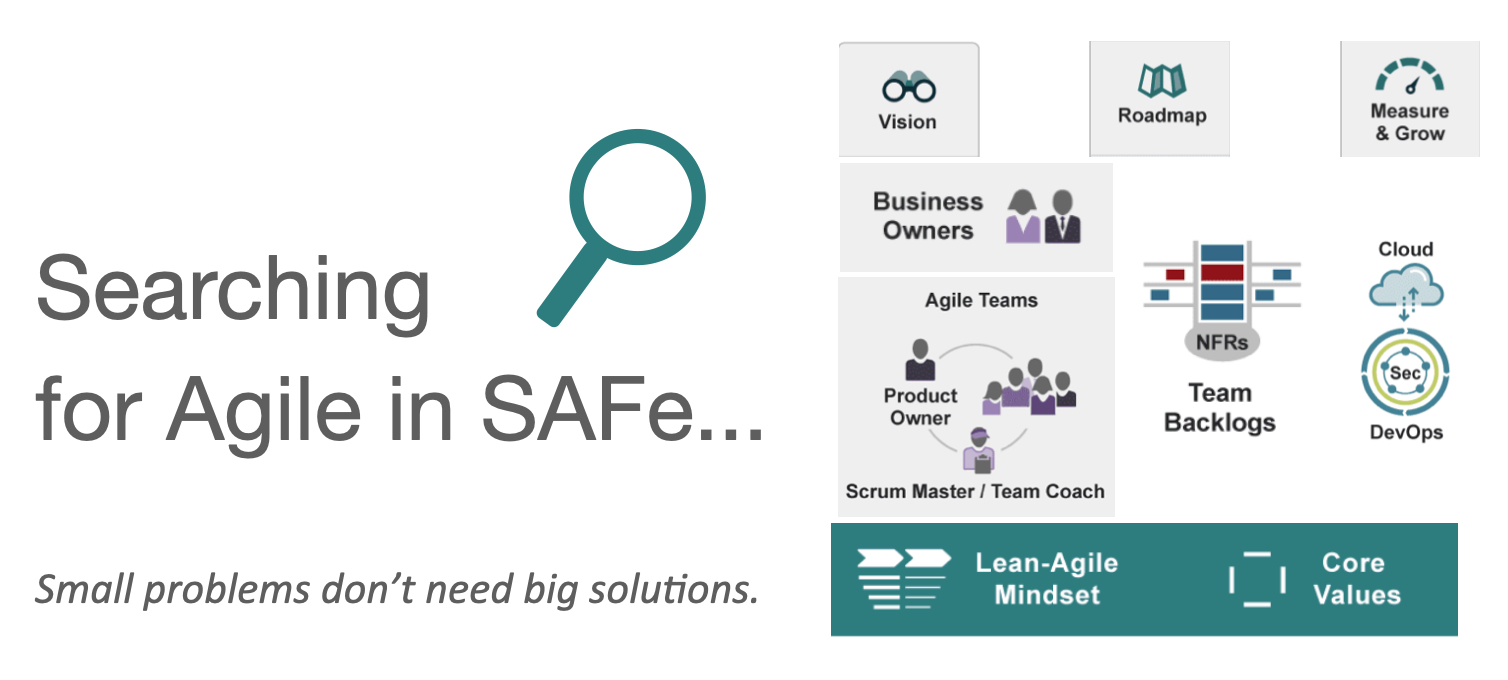Fractional CTO / CIO and Hands-on Technology Leadership
This is Saieva.com, the personal Website of Sal Saieva. I am an independent IT and Software Consultant. No matter the size of the project or the scale of the problems, I work to achieve simplicity, predictability, and long-term regularity in the most difficult technology and application initiatives.
Collaboration is the pathway for conducting my work. I will engage with business and technology teams to define digital strategies, implement product or service modernizations (including for AI feature sets), address tech debt, extend the useful life of legacy software, or fix an organizational issue or a vendor relationship problem.
And as a hands-on Fractional CTO my schedule is flexible to the specific needs of a project. You can find my career background on LinkedIn and ways I can help your startup or enterprise project on the About page.
I created MettleCVE, a vulnerability lookup tool for iPhone, to help Security Remediation Teams and Information Security Professionals access patch information to fix cybersecurity issues faster. You can see a short 35-second demo of the app here on YouTube.
Interested in Agile? Colleagues and friends frequently ask me how to get started with Agile for their projects and with their teams. The recommendations I've shared and used over-and-over-again are consolidated here on the How To Do Agile page.
A baseball manager recognizes a nonphysical talent, hustle, as an essential gift of great players and great teams. It is the characteristic of running faster than necessary, moving sooner than necessary, trying harder than necessary. It is essential for great programming teams, too. Hustle provides the cushion, the reserve capacity, that enables a team to cope with routine mishaps, to anticipate and forfend minor calamities. The calculated response, the measured effort, are the wet blankets that dampen hustle. -Frederick Brooks, The Mythical Man-Month.
Posts
-
2025 Bergen NJ and Rockland NY Free Outdoor Summer Concerts Near You

-
Remote Working: References and Resources
Managing a distributed team is hard. And it's not easy working with a manager, or with colleagues, you've only met on video meetings. As individuals, the challenges of remote work strain our abilities to effectively collaborate. As managers and leaders striving to build top-notch environments and experiences for our teams, remote scenarios are reshaping expectations for traditional ways of working. We can't expect these challenges to resolve on their own. Individuals will need skills and methods to collaborate effectively. Teams will need a game-plan to keep everyone on the same page.
-
Scale-down The Problem Before Scaling-up The Solution

-
Solving the Jane Street Software Engineering Mock Interview Problem
- 7/23/2025 Update: Jane Street posted a video about the hiring process for an internship. Checkout the video on YouTube here: https://www.youtube.com/watch?v=c9jTF-OSz9s
-
chef-run Compatibility with Amazon Linux 2022
I've found two compatibility issues between Chef Workstation (ie, the
chef-runcommand) and Amazon Linux 2022 (AL2022). The versions tested were: -
Running Squeezebox Server on AWS Graviton Systems
For anyone interested in running Logitech Media Server (LMS aka Squeezebox Server) on AWS EC2 instances with Graviton processors, here is a tested configuration with a list of additional packages that are required.
-
AWS S3 Endpoint Gateway Access for Linux 2 AMIs (Resolving HTTP 403 Forbidden Error)
An AWS Linux 2 EC2 instance running in a VPC configured with an S3 Endpoint Gateway to access update repositories received the following error when running the
yum updatecommand: -
Enabling Auto Standby Mode on the Denon PMA-600NE

-
Everything You Need for No-Knead and Dutch Oven Bread
If you're just getting started with no knead, sourdough, and dutch oven bread, here's a cheatsheet for everything you need to make great artisan style crusty rustic bread at home.
-
The [System Administrator's] Oath
Bob Martin (author of Clean Code, The Clean Coder, and evangelist of software craftsmanship) recently posted The Programmer’s Oath. Let’s say we have jobs as System Engineer’s or System Administrator’s. We may write code to automate our work, to manage, maintain, and operate our systems and environments, but we don’t necessarily work as Programmer’s do writing applications for business functions. Would the Programmer’s Oath apply? Are its promises relevant to systems engineering/administration work? Perhaps it does. Here’s a version with some of the words changed as The System Administrator’s Oath.
-
Reimagining the Implementation of TeX (and the Luxury of Modern Programming Methods)
Glenn Vanderburg, Engineering Director for Architecture at LivingSocial (@glv; https://vanderburg.org), has a personal project underway to implement TeX’s algorithms in the Clojure programming language. His work was recently described in an article published on InfoQ. Glenn also presented his work at the Clojure/conj conference last year in 2014, his excellent talk is posted on YouTube.
-
When Feelings, Emotions, and Love of Objects Occurs
Designers Jony Ive and Marc Newson recently collaborated on a collection of objects, some chosen and some designed and manufactured by them, for an auction supporting Bono’s (PRODUCT)RED brand and charity. Charlie Rose interviewed and toured the Sotheby’s auction floor with them. While the discussion was interesting in several ways, comments by Jony Ive on his motivations for design are deeply thoughtful and inspiring:
-
Resolving Data Connection Problems on an iPhone 4S in Spain
While traveling around Southern Spain in April 2013, I had a very difficult time getting a data connection on my iPhone 4S. The phone was purchased in the US with locked service from AT&T. Prior to my trip, I purchased the Global Data, Phone, and Messaging services from AT&T so I was not expecting any troubles.
-
25 Seconds Before Joy: Time Annotations For The Curiosity Rover’s Landing Video
Adam Steltzner, the NASA Engineer responsible for the Mars Curiosity Rover’s Entry Descent and Landing system, was interviewed by National Public Radio. In the article he described the jargon used in the Control Room during the final moments of the Rover’s descent on Mars. The article is here:
-
Rework Book Notes
Highlights from my reading of Rework by Jason Fried and David Heinemeier Hansson.
-
The Happiness Project Book Notes
Highlights from my reading of The Happiness Project by Gretchen Rubin.
-
Your Last 30 Days
When a new US President is elected there is a focus on their first 100 days in office. The process seems to be credited to Franklin D. Roosevelt who met with Congress each of those first 100 days to pass new laws and establish new programs that quickly made a difference at the time.
-
Agile is not fast, it’s frequent.
The principles (and the intention) of Agile Development are often confused with the word agile which people interpret to mean fast (in the sense of being quick and doing things other than in a thorough way). Of course that is an incorrect interpretation. Agile methods are not intended to be fast, if anything Agile teaches us to be iterative, repetitive, and to break down larger problems into smaller pieces that can be more easily understood, completed with higher quality, and delivered on an expected schedule. From that perspective, Agile teaches us to be frequent in the way we approach our work.
-
Reviewing performance is good; it should happen every day.
NPR posted an interesting article on a interview with Samuel Culbert, a UCLA business professor and author of the book Get Rid of the Performance Review! You can access the NPR article here: Annual Job Review Is 'Total Baloney,' Expert Says.
-
Playing iTunes .m4a Files on a Squeezebox2
I encountered a problem playing iTunes .m4a files on Squeezebox2 devices. It was interesting that from the same Squeezebox Server the files played fine on a Squeezebox3, but when attempting to play on a Squeezebox2 an error appeared on the Squeezebox Server’s Web interface, “Problem: Can’t open file for:
.m4a”. Other files, such as .mp3 filetypes, played fine. -
Move Messages to Folders with Outlook VBA
Let’s say your email management approach is to save important messages to a folder other than your Outlook Inbox. You might save messages from outside vendors to a folder named “Vendor Documents” or messages related to corporate policy to a “Policies” folder. Here’s an Outlook VBA macro that helps to file those messages from your Inbox in a single click:
-
Corporate Practice
As managers we work hard at choosing the best individuals for a job. We write job descriptions, conduct searches, and choose the best people we can find (the best educated, the most experienced, the best trained) for the roles in our groups. But having the best individuals doesn’t automatically create better teams. Managers are constantly challenged with the inefficient and inferior results that develop by people working as individuals, not sharing information, and not collaborating with colleagues. Conducting work in silos ultimately hurts innovation.
-
Communicating for Quality
While in Los Cabos, Mexico we stayed at an excellent hotel named the Hoteles Marquis. Like all memorable hotels the Marquis has a terrific location right on the Pacific coast, it’s buildings are beautifully architected, and their service is top-notch and high quality.
-
Unstressing Your Life, Wirelessly and in Stereo
I bought a Jeep Liberty in 2006 and toward the very end of deciding its color and the features I wanted (and didn’t want), and almost on a whim, I asked the salesperson to throw-in the Bluetooth wireless hands-free connection. It was about a $250 option that I actually didn’t feel was necessary at the time but I like technology and gadgets and adding it didn’t break the bank. I expected that it would be a fun feature to play around with, but I wasn’t really too hopeful about its usefulness; I figured it would end-up being a novelty.
-
A Creative Look at Pair Programming
I follow John Mayer the singer and songwriter on Twitter. Besides being a fan of his music, on Twitter Mayer (@johnmayer) is creative, funny, and he provides some transparency into his musical projects which are interesting. Mayer also writes the Battle Studies Mid-Action Report blog where he uploads videos and photos that are referenced in his Twitter postings.
-
The Most Overlooked Feature of Twitter
Often times when someone new follows me on Twitter I’ll usually spend a few minutes going through their timeline to learn about their background and interests. I’ll also read timelines for new people I encounter in @replies or retweeted messages. In addition to a person’s timeline, I recently started reading through Favorites which, in some cases it seems, is a better way to learn about someone.
-
What’s the Difference Between Development and IT?
For anyone in the technology management business that should be a very obvious and simple question to answer: Development is about programming and creating software applications and IT is about installing and managing servers and networks. While those are true and accurate differences, there is less value in obvious and simple answers and what we really want is something more meaningful. What if we’re looking to understand the nature of the processes used to manage development and IT functions and how those processes are different? What if we’re looking for the influences that make an application developer’s job different from a system administrator’s? How would you respond from that perspective?
-
Lower Your OO Expectations for the Windows PowerShell
For programmers who are used to leveraging object oriented techniques, even within modern scripting languages, don’t expect too much from the Windows PowerShell. Here’s a quote from the PowerShell Online Help file:
-
Twitter Resources and Links
(n.b. This post was originally written in 2008 and hasn’t been updated to reflect changes in the Twitter service and new tools that have been developed and offered since that time. For a more current introduction to Twitter I would recommend Michael Hyatt’s excellent Beginner’s Guide to Twitter. Sal.)
-
A Text Report for Outlook Calendars
My prior firm created a great little application for Outlook and Exchange calendars, here’s how it worked. People in the Systems Group entered their out-of-office time (vacation time, sick days, work from home days, etc) into an Exchange Public Folder calendar called “Vacations.” The application, which ran overnight sort of in a batch mode, would read the calendar and format a text report suitable for reading in Outlook or on a Blackberry device. The report, as I remember it, looked something like this:
subscribe via RSS


